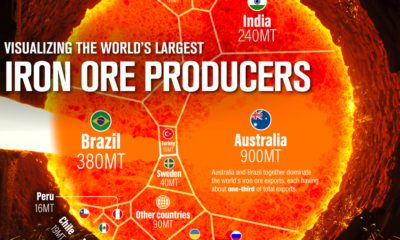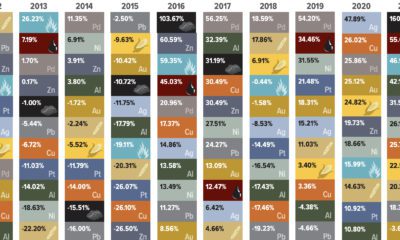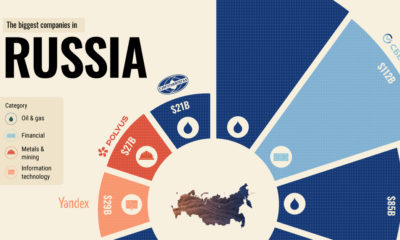The Re-Awakening of the Golden Triangle
Many years ago, a remote and mountainous region in northwestern British Columbia gained considerable notoriety as an emerging mineral district. With a rich mining history, one of the world’s largest silver mines (Eskay Creek, discovered in 1988), and million ounce gold deposits – this area of incredible wealth became known as “The Golden Triangle”. However, despite its obvious potential, the vast majority of land in this highly prospective region has been left mostly untouched by humans. A combination of factors, including low gold prices and a lack of infrastructure, has led to the area laying dormant for decades. Today, things are changing dramatically. The Golden Triangle is a new hotbed for mineral discovery, and over 130 million ounces of gold, 800 million ounces of silver, and 40 billion lbs of copper have been found. The amazing part is that this is only scratching the surface of the region’s ultimate potential. Skeena Resources and IDM Mining have generously helped us to put together the story on the re-awakening of the famed Golden Triangle.
The New Gold Rush
Why is the Golden Triangle at the center of attention again? There are five main reasons:
- New Deposits Found The old adage is that the best place to find a new mine is near an existing one. Here are three major deposits in the Golden Triangle that have geologists and financiers buzzing: KSM Seabridge’s KSM Project is the largest gold project in the world. It recently received the green light from Canada’s federal government to go ahead in 2014. A porphyry-style deposit, it has reserves of 38.8 million oz of gold, 10.2 billion lbs of copper, and 183 million oz of silver. Red Chris This $700 million copper and gold mine entered production in 2015. Owned by Imperial Metals, it will be in production until 2043 based on current mine life estimates. In 2016 alone, it produced 83 million lbs of copper, 47,000 oz of gold, and 190,000 oz of silver. Valley of the Kings The latest, and perhaps most interesting, discovery in the Golden Triangle is slotted to reach commercial production in 2017. The Valley of the Kings, unlike the above porphyry-style deposits, contains extremely high-grade gold. With 8.1 million ounces at a grade of 16.1 g/t, this deposit has some of the richest ore in the world.
- New Infrastructure In recent years, the Golden Triangle has received three massively important infrastructure upgrades:
Paving of the Stewart-Cassiar Highway (North from Smithers) The opening of ocean port facilities for export of concentrate at Stewart Completion of a $700 million high-voltage transmission line to bring power into the Golden Triangle
- Declining Snow Cover Glacial ice and snow has been retreating in many parts of the region, revealing rocks never seen before by human eyes. Especially in a mineral-rich region such as the Golden Triangle, this is a very exciting prospect for mineral geologists.
- A New Geological Explanation The Golden Triangle region has complex geology that has befuddled explorers for decades – but recent work has made the picture much clearer. Geologist Jeff Kyba has put forth the following theory: geologic contact between Triassic age Stuhini rocks and Jurassic age Hazelton rocks is the key marker for copper-gold mineralization. Most of the Triangle’s copper-gold deposits, whether they are large-scale porphyry and intrusion-related, are found within 2km of this contact. It’s been infamously named “The Red Line”, and this new interpretation of the region’s geology could contribute to BC’s next mega deposit.
- Gold Price Recovery Since the “sleepy” days of the Golden Triangle, gold prices have increased 3x, even after adjusting for inflation. Combined with new infrastructure, exciting projects, and world-class mineral potential, and the Golden Triangle is awake again.
What’s Happening Today?
Today, the Golden Triangle is buzzing with activity.
The Red Chris Mine is now in operation Valley of the Kings is entering production in 2017. KSM, the world’s largest gold deposit, is nearing potential construction. Historic mines like the Snip Mine and Granduc are being explored using modern methods. New high-grade gold is being found. Red Mountain and the old Premier Gold Mine are the sites of some of these discoveries. Dozens of companies are on the ground performing all phases of exploration.
Many types of mineral deposits are being tested for, including high-grade gold veins, large-scale porphyries, and VMS (volcanogenic massive sulphide) deposits. The Golden Triangle is once again the center of the attention, and it could be poised to become one of the world’s most prolific concentrations of mineral wealth. on Did you know that nearly one-fifth of all the gold ever mined is held by central banks? Besides investors and jewelry consumers, central banks are a major source of gold demand. In fact, in 2022, central banks snapped up gold at the fastest pace since 1967. However, the record gold purchases of 2022 are in stark contrast to the 1990s and early 2000s, when central banks were net sellers of gold. The above infographic uses data from the World Gold Council to show 30 years of central bank gold demand, highlighting how official attitudes toward gold have changed in the last 30 years.
Why Do Central Banks Buy Gold?
Gold plays an important role in the financial reserves of numerous nations. Here are three of the reasons why central banks hold gold:
Balancing foreign exchange reserves Central banks have long held gold as part of their reserves to manage risk from currency holdings and to promote stability during economic turmoil. Hedging against fiat currencies Gold offers a hedge against the eroding purchasing power of currencies (mainly the U.S. dollar) due to inflation. Diversifying portfolios Gold has an inverse correlation with the U.S. dollar. When the dollar falls in value, gold prices tend to rise, protecting central banks from volatility. The Switch from Selling to Buying In the 1990s and early 2000s, central banks were net sellers of gold. There were several reasons behind the selling, including good macroeconomic conditions and a downward trend in gold prices. Due to strong economic growth, gold’s safe-haven properties were less valuable, and low returns made it unattractive as an investment. Central bank attitudes toward gold started changing following the 1997 Asian financial crisis and then later, the 2007–08 financial crisis. Since 2010, central banks have been net buyers of gold on an annual basis. Here’s a look at the 10 largest official buyers of gold from the end of 1999 to end of 2021: Rank CountryAmount of Gold Bought (tonnes)% of All Buying #1🇷🇺 Russia 1,88828% #2🇨🇳 China 1,55223% #3🇹🇷 Türkiye 5418% #4🇮🇳 India 3956% #5🇰🇿 Kazakhstan 3455% #6🇺🇿 Uzbekistan 3115% #7🇸🇦 Saudi Arabia 1803% #8🇹🇭 Thailand 1682% #9🇵🇱 Poland1282% #10🇲🇽 Mexico 1152% Total5,62384% Source: IMF The top 10 official buyers of gold between end-1999 and end-2021 represent 84% of all the gold bought by central banks during this period. Russia and China—arguably the United States’ top geopolitical rivals—have been the largest gold buyers over the last two decades. Russia, in particular, accelerated its gold purchases after being hit by Western sanctions following its annexation of Crimea in 2014. Interestingly, the majority of nations on the above list are emerging economies. These countries have likely been stockpiling gold to hedge against financial and geopolitical risks affecting currencies, primarily the U.S. dollar. Meanwhile, European nations including Switzerland, France, Netherlands, and the UK were the largest sellers of gold between 1999 and 2021, under the Central Bank Gold Agreement (CBGA) framework. Which Central Banks Bought Gold in 2022? In 2022, central banks bought a record 1,136 tonnes of gold, worth around $70 billion. Country2022 Gold Purchases (tonnes)% of Total 🇹🇷 Türkiye14813% 🇨🇳 China 625% 🇪🇬 Egypt 474% 🇶🇦 Qatar333% 🇮🇶 Iraq 343% 🇮🇳 India 333% 🇦🇪 UAE 252% 🇰🇬 Kyrgyzstan 61% 🇹🇯 Tajikistan 40.4% 🇪🇨 Ecuador 30.3% 🌍 Unreported 74165% Total1,136100% Türkiye, experiencing 86% year-over-year inflation as of October 2022, was the largest buyer, adding 148 tonnes to its reserves. China continued its gold-buying spree with 62 tonnes added in the months of November and December, amid rising geopolitical tensions with the United States. Overall, emerging markets continued the trend that started in the 2000s, accounting for the bulk of gold purchases. Meanwhile, a significant two-thirds, or 741 tonnes of official gold purchases were unreported in 2022. According to analysts, unreported gold purchases are likely to have come from countries like China and Russia, who are looking to de-dollarize global trade to circumvent Western sanctions.
There were several reasons behind the selling, including good macroeconomic conditions and a downward trend in gold prices. Due to strong economic growth, gold’s safe-haven properties were less valuable, and low returns made it unattractive as an investment.
Central bank attitudes toward gold started changing following the 1997 Asian financial crisis and then later, the 2007–08 financial crisis. Since 2010, central banks have been net buyers of gold on an annual basis.
Here’s a look at the 10 largest official buyers of gold from the end of 1999 to end of 2021:
Source: IMF
The top 10 official buyers of gold between end-1999 and end-2021 represent 84% of all the gold bought by central banks during this period.
Russia and China—arguably the United States’ top geopolitical rivals—have been the largest gold buyers over the last two decades. Russia, in particular, accelerated its gold purchases after being hit by Western sanctions following its annexation of Crimea in 2014.
Interestingly, the majority of nations on the above list are emerging economies. These countries have likely been stockpiling gold to hedge against financial and geopolitical risks affecting currencies, primarily the U.S. dollar.
Meanwhile, European nations including Switzerland, France, Netherlands, and the UK were the largest sellers of gold between 1999 and 2021, under the Central Bank Gold Agreement (CBGA) framework.
Which Central Banks Bought Gold in 2022?
In 2022, central banks bought a record 1,136 tonnes of gold, worth around $70 billion. Türkiye, experiencing 86% year-over-year inflation as of October 2022, was the largest buyer, adding 148 tonnes to its reserves. China continued its gold-buying spree with 62 tonnes added in the months of November and December, amid rising geopolitical tensions with the United States. Overall, emerging markets continued the trend that started in the 2000s, accounting for the bulk of gold purchases. Meanwhile, a significant two-thirds, or 741 tonnes of official gold purchases were unreported in 2022. According to analysts, unreported gold purchases are likely to have come from countries like China and Russia, who are looking to de-dollarize global trade to circumvent Western sanctions.













